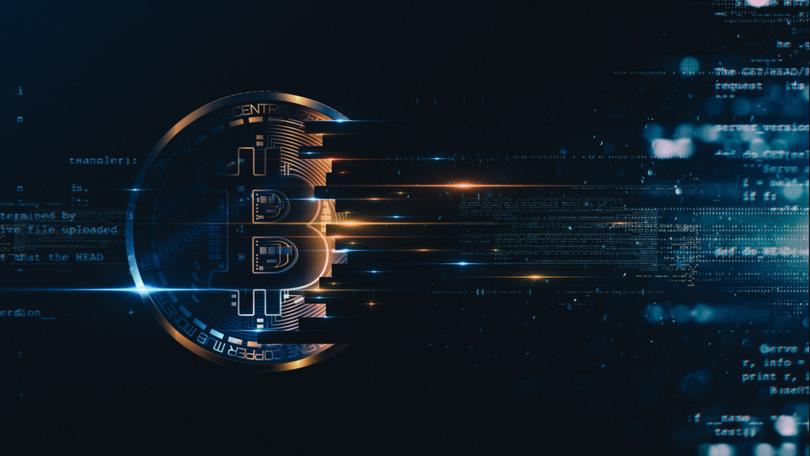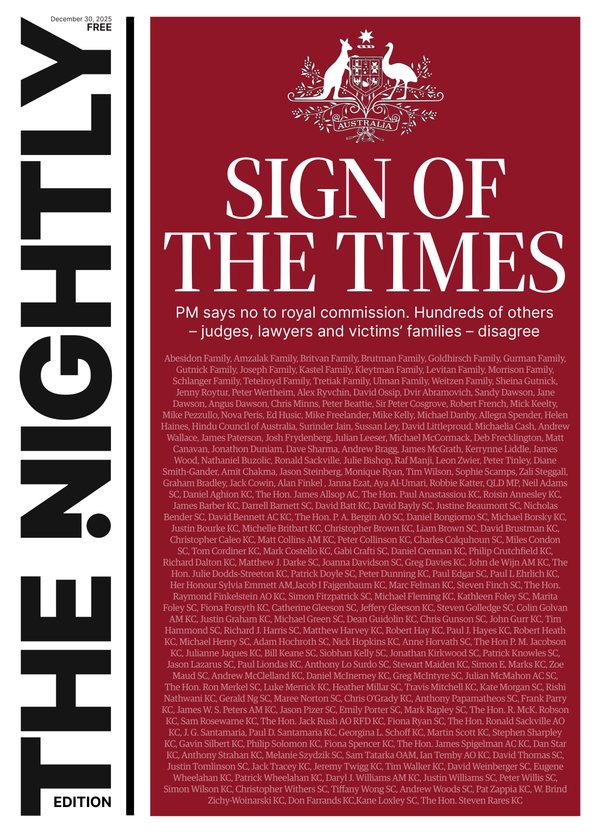THE WASHINGTON POST: Bitcoin’s inventor is a mystery. An HBO filmmaker thinks he found him.

The identity of the inventor of bitcoin might be the internet’s most enduring and consequential mystery - especially because that person could personally control a cryptocurrency stash worth tens of billions of dollars. Now the creator of a new HBO documentary thinks he may have solved the riddle.
Cullen Hoback, the documentarian who made a convincing argument for the real names of the men behind the QAnon conspiracy theory in 2021’s “Q: Into the Storm,” believes he may have uncovered “Satoshi Nakamoto,” the alias that bitcoin’s inventor used online.
Hoback thinks that, rather than a programming expert or criminal mastermind, the real Nakamoto is Peter Todd, a developer from Canada who would’ve been a college student when the cryptocurrency first appeared.
Sign up to The Nightly's newsletters.
Get the first look at the digital newspaper, curated daily stories and breaking headlines delivered to your inbox.
By continuing you agree to our Terms and Privacy Policy.Hoback doesn’t reveal incontrovertible proof tying Todd to the Nakamoto alias in his documentary “Money Electric: The Bitcoin Mystery,” premiering Tuesday on HBO. Instead, he strings together intriguing coincidences and forum posts to argue that Todd is the likeliest candidate.
“We’re making a very strong case,” Hoback told The Washington Post. “And ultimately, I want to leave it up to the audience to draw their own conclusion.”
In an email to The Post, Todd denied inventing bitcoin, and said people like Hoback should stop looking for the cryptocurrency’s founder.
“Not only is the question dumb, it’s dangerous,” Todd said. “Satoshi obviously didn’t want to be found, for good reasons, and no one should help people trying to find Satoshi.”
Bitcoin’s volatile price and history of scams, frauds and “rug pulls” have often made it a Wall Street laughingstock. But it has nevertheless become an inescapable factor in economic policy and American politics. Crypto has created a new generation of tech elites and spawned a powerful new lobby in Washington.
Former president Donald Trump has embraced crypto, launching his own cryptocurrency business and courting investors as a voting bloc. In August, he floated the idea of paying off the national debt with “a little bitcoin.”
Whoever Nakamoto is, they would be incredibly wealthy if they still have access to the roughly 1 million bitcoins they mined in cryptocurrencies’ early days - a haul worth roughly $65 billion. This wealth could expand if bitcoin’s price continues to rise, a reason that Hoback argues it’s important to unmask the real Nakamoto.
“They’re on track to becoming the richest person on Earth eventually,” Hoback said.
Because of Nakamoto’s potentially immense wealth, Todd said in an email to The Post, Hoback’s claim that he is the bitcoin inventor could expose him to kidnappers or other criminals. Ahead of the documentary’s release, Todd said he is going on a trip to escape potential danger.
“Falsely claiming that ordinary people of ordinary wealth are extraordinarily rich exposes them to threats like robbery and kidnapping,” Todd wrote.
The evidence Hoback describes as his “smoking gun” dates back to the cryptocurrency’s early days, in a 2010 discussion between Todd and Nakamoto on a bitcoin forum. In the first post, Nakamoto lays out a solution to a complex problem facing bitcoin. Then Todd - who had just joined the forum a few days earlier and would later claim to have had nearly no knowledge of bitcoin until several years later - chimes in roughly 90 minutes after the first post to correct the bitcoin inventor.
“Of course, to be specific, the inputs and outputs can’t match *exactly* if the second transaction has a transaction fee,” Todd replied to Nakamoto.
Studying the posts, Hoback came to believe Todd didn’t intend to write back to Nakamoto. Instead, Hoback thinks Todd committed a classic internet error when switching between aliases and mixed up his “Nakamoto” and “Todd” accounts on the forum, and instead meant for his Todd correction post to be under Nakamoto’s name.
“Is he responding, or is he continuing a thought?” Hoback asks in the documentary.
A few days after the alleged mix-up, Nakamoto stopped posting online entirely. Todd vanished from the forum for several years.
Hoback points to other evidence, too. While many of the Nakamoto candidates are expert coders, the inventor’s coding has been described as amateurish, which would fit with Todd’s background at the time. Nakamoto wrote more about bitcoin during summers, suggesting that his real job was on an academic calendar - like a college student. The bitcoin inventor uses British spellings of words, which Hoback said could be explained by Todd’s Canadian background.

Hoback is only the latest journalist to try to solve what may be the biggest mystery of the internet age, with many past attempts ending in high-profile embarrassment.
In 2011, the New Yorker alleged that Nakamoto was a 23-year-old cryptography graduate student in Ireland named Michael Clear, who vehemently denied it. Later that year, Fast Company, arguing that the magazine “got the wrong man,” analyzed Nakamoto’s writing and other circumstantial evidence to come up with three other suspects. These identities were also wrong, said the story’s author, journalist Adam Penenberg, who wrote that “in the end I ran into a brick wall.”
Since then, Vice, Newsweek, the New York Times and Wired have all tried to uncover Nakamoto’s identity, but their claims have either failed to catch on or been debunked entirely.
The flood of misidentifications turned the pursuit into a circus; some news organizations were flooded with vague tips about his true identity from strangers, some of whom confessed to being Nakamoto themselves. Identifying Nakamoto was made even more challenging by an inside joke among crypto die-hards: that, even if they were Nakamoto, they’d never say.
Despite his history of digging up internet mysteries, Hoback initially shied away from pursuing Nakamoto, fearing it would be a “fool’s errand.” But then director Adam McKay, who served as an executive producer on “Q: Into the Storm,” pushed him to pursue the inventor’s real identity.
“He said, ‘Hey, you know what you should do next?’” Hoback said. “I was like, ‘Don’t say Satoshi.’”
Amid the hunt for Nakamoto’s identity, Todd was rarely, if ever, named as a suspect. But Todd’s mentor, a British “cypherpunk” named Adam Back who was the first known person to correspond with Nakamoto, was floated as a possibility in a 2016 Financial Times piece and on a 2020 video on a YouTube channel called Barely Sociable.
In the documentary, Hoback’s dramatic confrontation of Todd during a hike last year through the abandoned ruins of a steelworks plant in the Czech Republic ultimately ends with no clear resolution. Todd laughs off the accusation and denies it, pointing back to the long list of failed investigations from years past.
“I will admit, you’re pretty creative. You come up with some crazy theories,” Todd tells Hoback.
“It’s ludicrous, but it’s the sort of theory someone who spends their time as a documentary journalist would come up with.”
“I’ll warn you, this is going to be very funny when you put this into the documentary and a bunch of bitcoiners watch it,” he adds. “It’s going to be yet another example of journalists really missing the point in a way that’s very funny.”
Asked what that “point” really was, he responds: “The point is to make bitcoin the global currency. And people like you being distracted by nonsense could potentially do good on that.”
Back, who accompanied the men on the hike and is portrayed in the documentary as a sort of father figure to Todd, smirked cryptically in the background during the scene. At one point, Back tries to calm Todd by warning, “You’re feeding him footage.”
The debate over Nakamoto’s identity will probably continue to rage even after the documentary. Last week, an opinion writer in Bitcoin Magazine who hadn’t seen the film pointed to the long list of failed Nakamoto unmaskings and urged viewers to take the documentary with “a huge grain of salt.”
Asked for proof that Todd is the real Nakamoto, Hoback points to his uncomfortable confrontation with Todd and Back as more evidence.
“I think that an audience can look at Peter Todd’s reaction, and look at Adam Back’s reaction and how they behave when they’re confronted with the evidence, and then say, ‘How convinced are they?’” Hoback said.
© 2024 , The Washington Post
